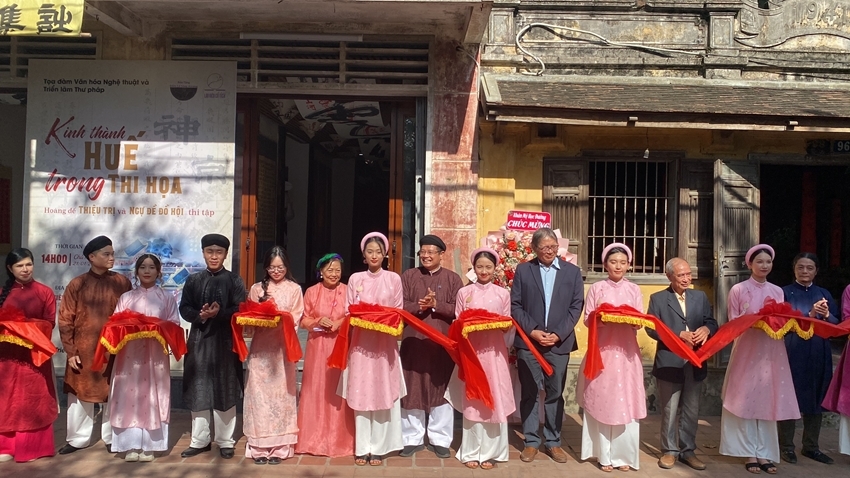 |
| The ribbon-cutting ceremony marked the inauguration of the exhibition |
The seminar and exhibition revolved around the literary works of Emperor Thieu Tri (1807 - 1847) engraved in the poetry collection "Ngu de Do Hoi." This discussion expanded to encompass the cultural, artistic, and architectural achievements during the reign of Emperor Thieu Tri (1841 - 1847).
"Ngu De Do Hoi" is a poetry collection within the extensive literary works of Emperor Thieu Tri, the third ruler of the Nguyen dynasty. The collection is divided into three parts: "Ngu de Danh thang do hoi," featuring poems praising the beauty of the Imperial City and scenic spots in Hue; "Ngu de Co tich do hoi," including poems praising historical legends reflecting moral teachings for future generations; and "Ngu de Nhan vat do hoi," consisting of poems praising objects, various fruits, animals, thereby conveying the intent to use poetry for education, cultivating character, and nurturing the spirit.
The seminar and exhibition program introduced 15 calligraphy works by calligraphers such as Xuan Nhu Vu Thanh Tung, Nam Long Nguyen Quang Duy, Mac Sinh Le Huy Hoang, Duy Phong Le Dinh Son, Dieu Quang Bui Quang Tuan, Tien Hoa Dao Van Thuan, Nam Phong Bui Hai Nam, Nhu Nhu Nguyen Thuy Quynh. These works represented the poems from "Ngu de Do Hoi" using five writing styles: trien, le, khai, hanh, thao.
According to Dr. Phan Thanh Hai, Director of the Department of Culture and Sports of Thua Thien Hue Province, the exhibition showcased the beauty of Hue through the verses of the imperial poems and documentary images, aiming to partially recreate the splendid Imperial City in poetry. Additionally, by displaying Han Nom (Sino-Vietnamese Demotic characters) calligraphy works, the exhibition sought to honor the precious heritage of predecessors, bringing Han Nom heritage and culture closer to the public to inspire preservation efforts and promote traditional cultural values.
